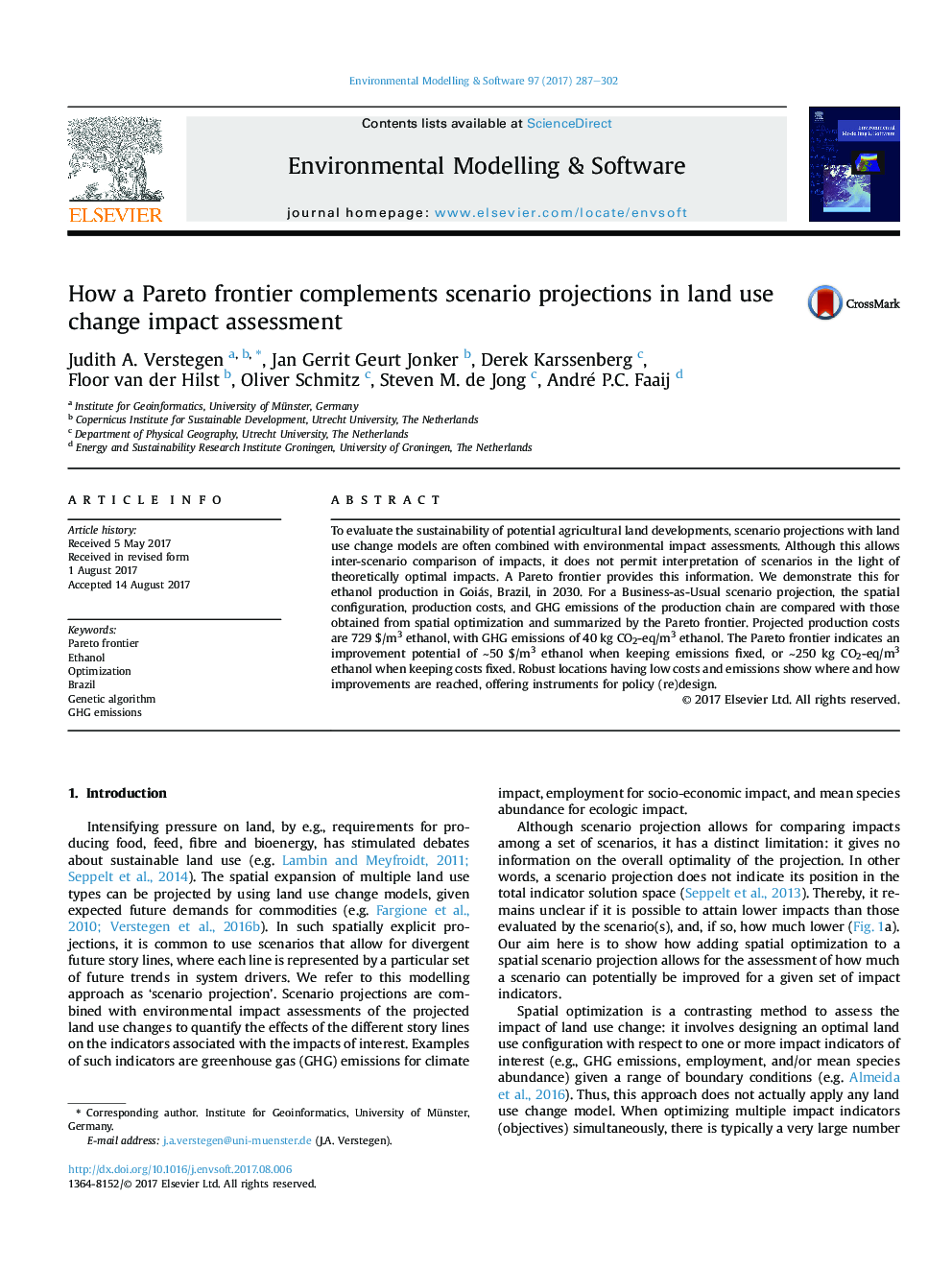| Article ID | Journal | Published Year | Pages | File Type |
|---|---|---|---|---|
| 4978067 | Environmental Modelling & Software | 2017 | 16 Pages |
Abstract
To evaluate the sustainability of potential agricultural land developments, scenario projections with land use change models are often combined with environmental impact assessments. Although this allows inter-scenario comparison of impacts, it does not permit interpretation of scenarios in the light of theoretically optimal impacts. A Pareto frontier provides this information. We demonstrate this for ethanol production in Goiás, Brazil, in 2030. For a Business-as-Usual scenario projection, the spatial configuration, production costs, and GHG emissions of the production chain are compared with those obtained from spatial optimization and summarized by the Pareto frontier. Projected production costs are 729 $/m3 ethanol, with GHG emissions of 40Â kg CO2-eq/m3 ethanol. The Pareto frontier indicates an improvement potential of â¼50 $/m3 ethanol when keeping emissions fixed, or â¼250Â kg CO2-eq/m3 ethanol when keeping costs fixed. Robust locations having low costs and emissions show where and how improvements are reached, offering instruments for policy (re)design.
Related Topics
Physical Sciences and Engineering
Computer Science
Software
Authors
Judith A. Verstegen, Jan Gerrit Geurt Jonker, Derek Karssenberg, Floor van der Hilst, Oliver Schmitz, Steven M. de Jong, André P.C. Faaij,
